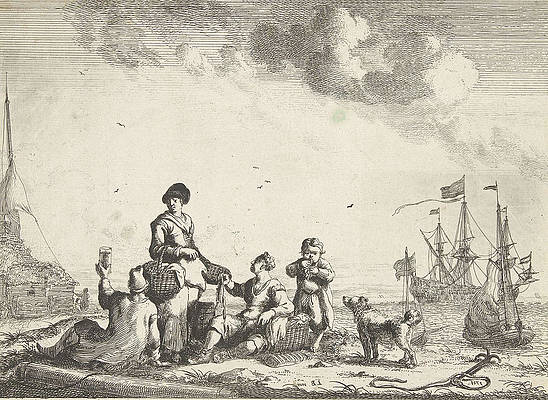 Bakhuizen embellished this seascape (his usual subject) with a group of picnickers. Picnick ann zee’s contemporary title is appropriate but inaccurate because picnic was not applied to an alfresco meal in 1701. Pique-nique had only been included in Gilles...
Bakhuizen embellished this seascape (his usual subject) with a group of picnickers. Picnick ann zee’s contemporary title is appropriate but inaccurate because picnic was not applied to an alfresco meal in 1701. Pique-nique had only been included in Gilles...
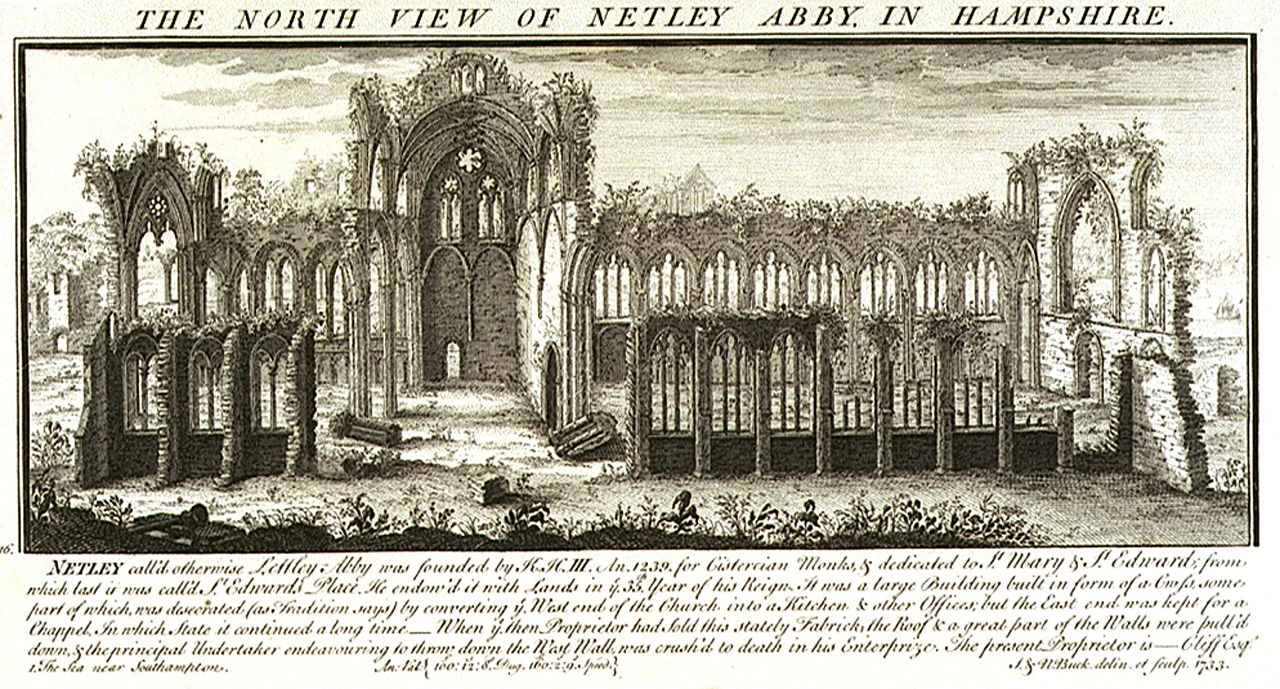 Writing to his dear friend (and probable mistress) Martha Blount, Pope related his adventure at Netley Abbey and his alfresco luncheon there. He does not call it a picnic because the word was not used in English parlance until 1806. (See Harris’s The happy...
Writing to his dear friend (and probable mistress) Martha Blount, Pope related his adventure at Netley Abbey and his alfresco luncheon there. He does not call it a picnic because the word was not used in English parlance until 1806. (See Harris’s The happy...
 De Troy’s hunt meals were designed for aristocratic patrons. Two paintings Hunt Breakfast and The Death of a Stag were commissioned as companions pieces by Louis XV and designed for his private dining room in Fontainebleau. Hunt Breakfast depicts the high spirits of...
De Troy’s hunt meals were designed for aristocratic patrons. Two paintings Hunt Breakfast and The Death of a Stag were commissioned as companions pieces by Louis XV and designed for his private dining room in Fontainebleau. Hunt Breakfast depicts the high spirits of...
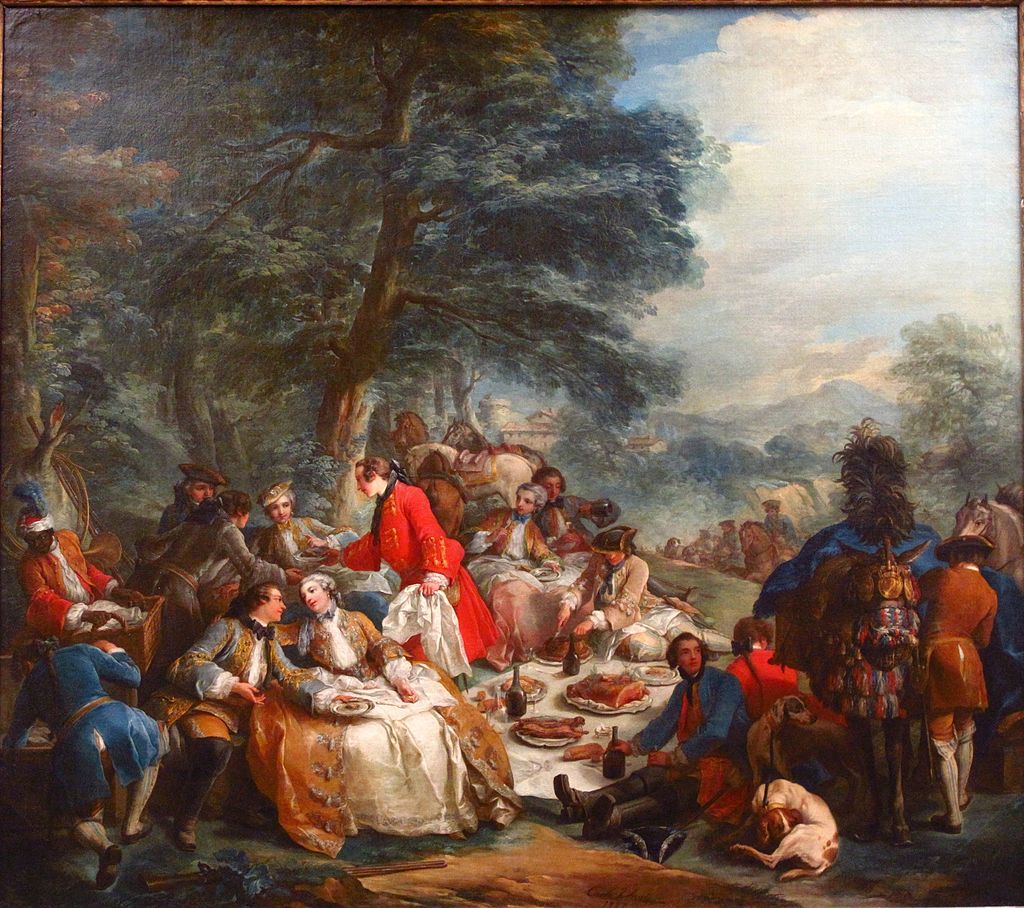 As usual among the French, a halt on the hunt is never referred to as a picnic, although that’s what it is. Van Loo’s Halte de chasse is a narrative of a stop during the hunt, at which the ladies meet the hunters at a predetermined place, called a tryst,...
As usual among the French, a halt on the hunt is never referred to as a picnic, although that’s what it is. Van Loo’s Halte de chasse is a narrative of a stop during the hunt, at which the ladies meet the hunters at a predetermined place, called a tryst,...
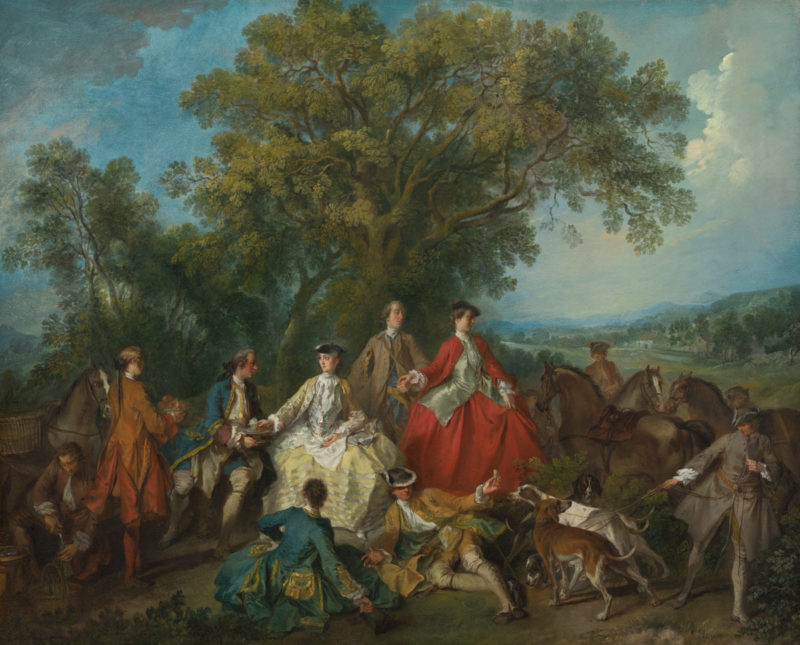 Because the scene is obviously a picnic, the National Gallery of Art’s title, The Picnic after the Hunt, is apt. But Lancret would not have used pique-nique because the French denoted it as an indoor dinner. More likely, he would have titled un repas de chasse, as he...
Because the scene is obviously a picnic, the National Gallery of Art’s title, The Picnic after the Hunt, is apt. But Lancret would not have used pique-nique because the French denoted it as an indoor dinner. More likely, he would have titled un repas de chasse, as he...
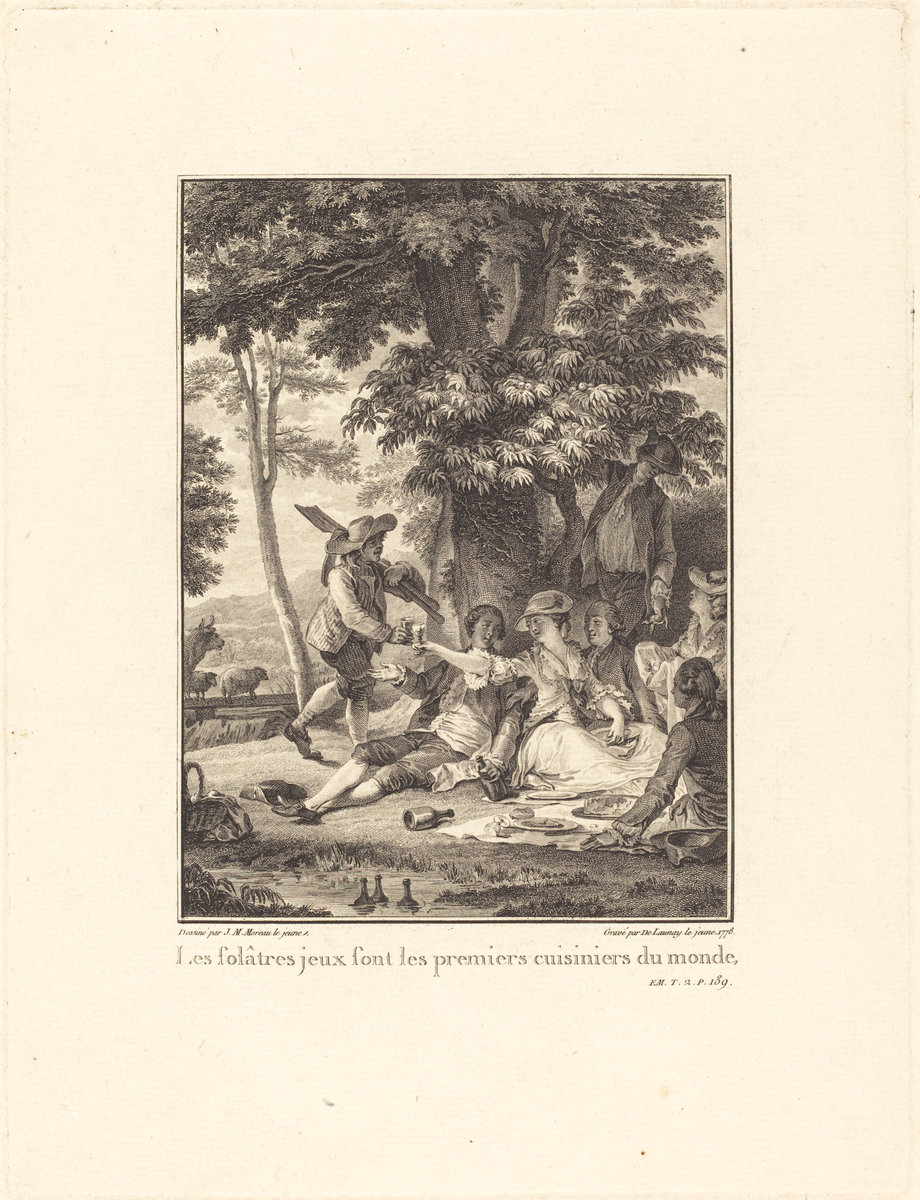 Rousseau was not thinking of a pique-nique when he wrote, “The turf will be our chairs and table, the banks of the stream our side-board, and our dessert is hanging on the trees.” He knew that pique-nique was an indoor meal for which friends shared the...
Rousseau was not thinking of a pique-nique when he wrote, “The turf will be our chairs and table, the banks of the stream our side-board, and our dessert is hanging on the trees.” He knew that pique-nique was an indoor meal for which friends shared the...
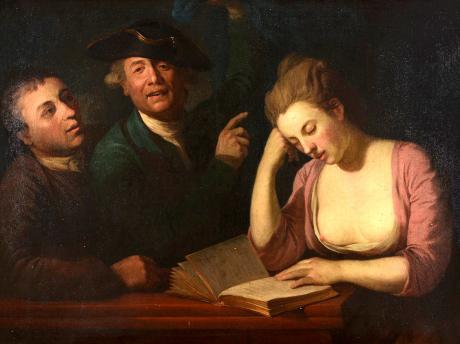 Samuel Foote’s comedyThe Nabob, now obscure, is the first linkage of picnic with the euphemism “nick-nack.” He used in the sense of dining en piquenique, which suggests familiarity. The alliterative corruption is meant to be humorous for those in the...
Samuel Foote’s comedyThe Nabob, now obscure, is the first linkage of picnic with the euphemism “nick-nack.” He used in the sense of dining en piquenique, which suggests familiarity. The alliterative corruption is meant to be humorous for those in the...
 Lima was a thriving major colonial town now grown into Chile’s capital and largest city with 10 million. Two centuries ago, an unidentified artist of the Lima School painted A Merry Company on the Banks of the Rímac, a happy picnic in which elegant aristocrats engaged...
Lima was a thriving major colonial town now grown into Chile’s capital and largest city with 10 million. Two centuries ago, an unidentified artist of the Lima School painted A Merry Company on the Banks of the Rímac, a happy picnic in which elegant aristocrats engaged...
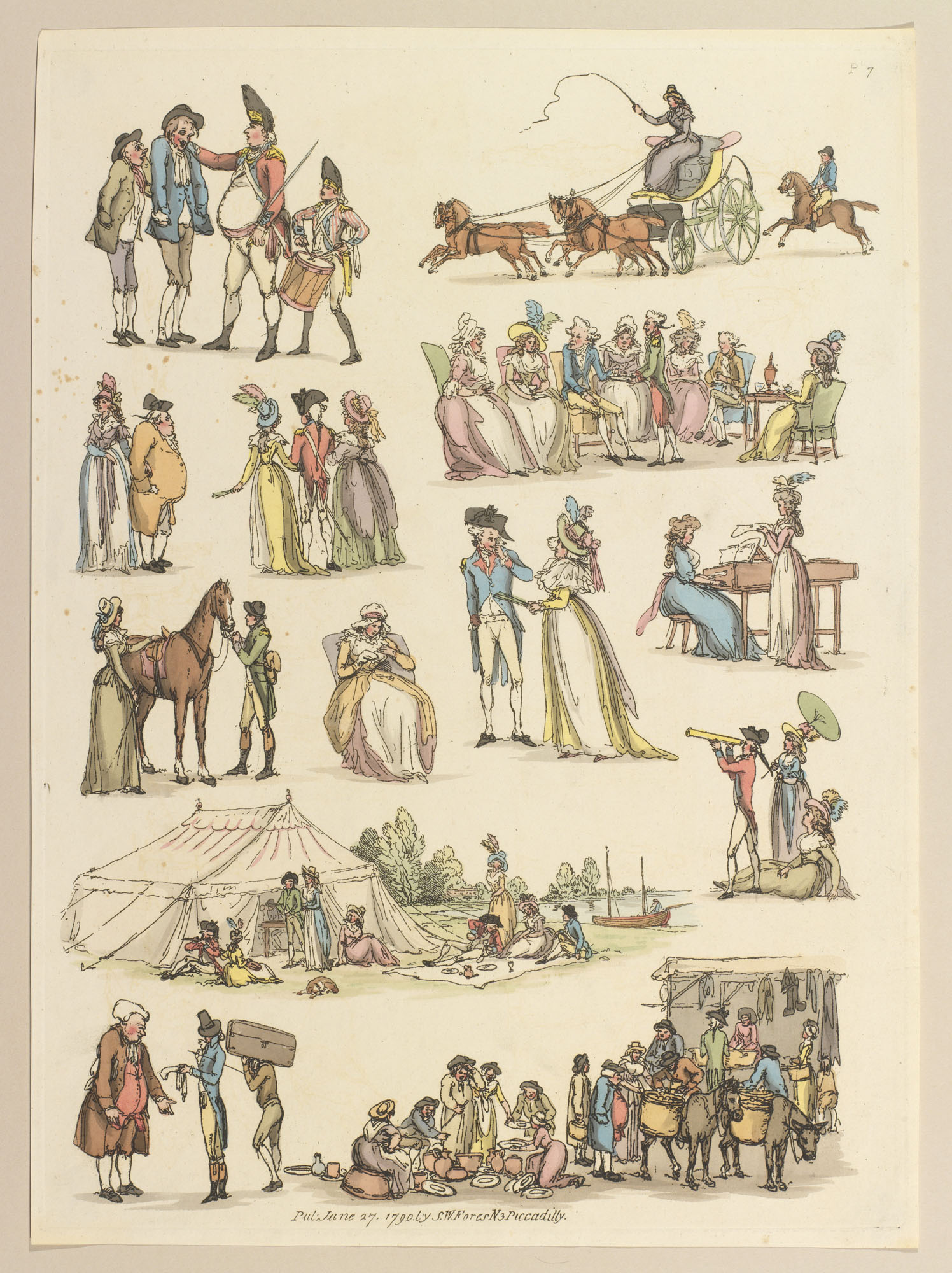 Rowlandson’s 1790 catalog of everyday life among the Brits includes a picnic scene. People looking at it would recognize an alfresco luncheon, but they would not have a name for it. What we call a picnic was unknown in English. Even if Brits knew the French word...
Rowlandson’s 1790 catalog of everyday life among the Brits includes a picnic scene. People looking at it would recognize an alfresco luncheon, but they would not have a name for it. What we call a picnic was unknown in English. Even if Brits knew the French word...
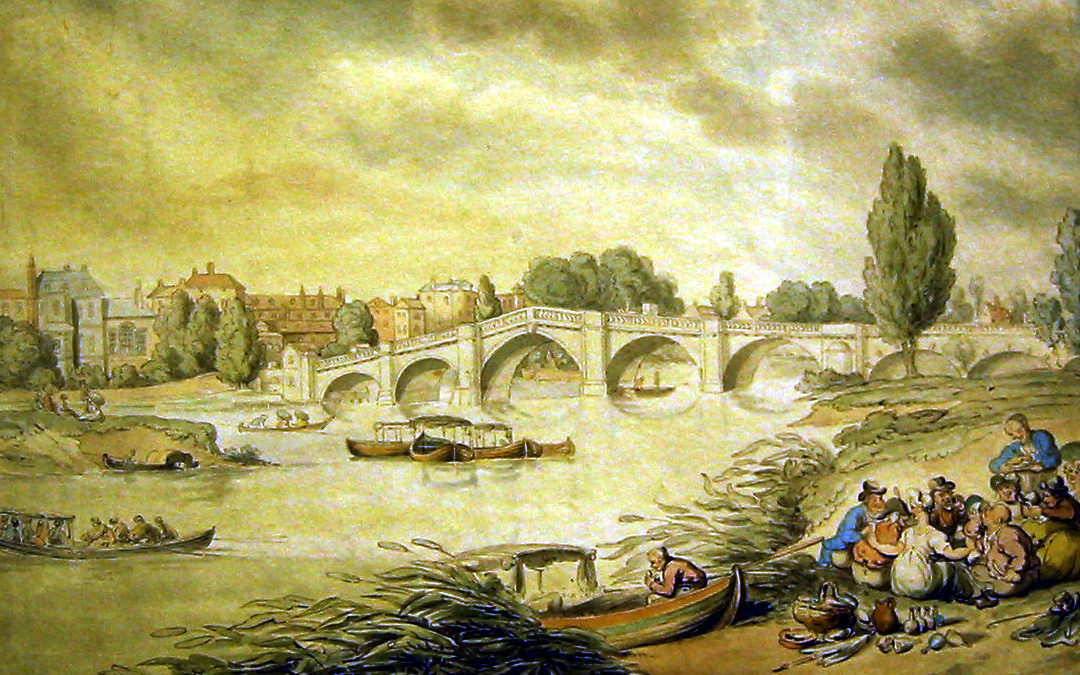 Rowlandson’s Richmond Bridge, Surrey documents a picnic party at low tide on the Thames’s sandy shore opposite Hampton Court. It was common for Londoners to hire a water taxi to transport picnicker out of the city and into the country for an afternoon of eating and...
Rowlandson’s Richmond Bridge, Surrey documents a picnic party at low tide on the Thames’s sandy shore opposite Hampton Court. It was common for Londoners to hire a water taxi to transport picnicker out of the city and into the country for an afternoon of eating and...











